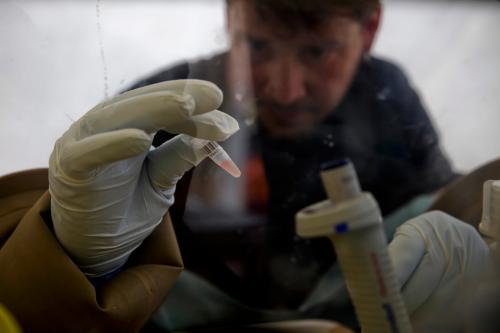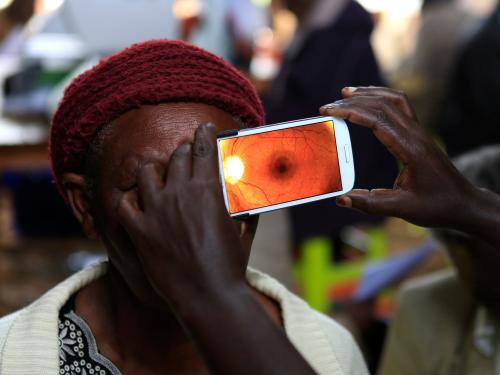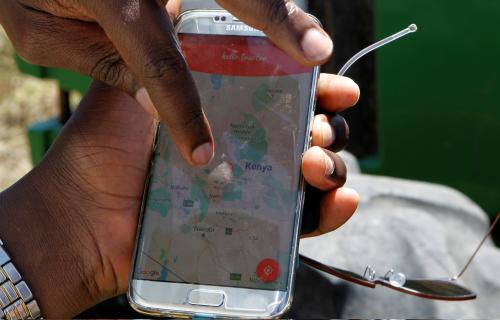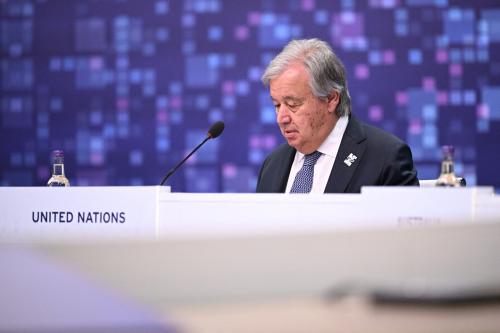Despite heavy investments directed towards the provisions of social services in Africa, service delivery outcome in terms of quality and access remains disappointing—especially in health. A large volume of empirical evidence shows that, for many developing countries, there is only a weak connection between spending on public services and service delivery outcomes. Merely increasing the amount of resources devoted to a service does not necessarily translate into positive results. The reasons for this outcome are inefficiencies and weak accountability across service delivery chains, compounded by a paucity of functional infrastructure that make it difficult and costly for the poor to access services. This is especially true for the poor in rural areas and in areas of high concentration of poverty in urban slums. Service delivery is also complicated by fragility, especially in conflict and post-conflict countries.
But mobile phone-based technological innovations are changing the service delivery landscape in Africa, especially among poor populations and those living in fragile states. The mobile phone revolution that first overcame previously difficult insurmountable communication problems in countries with poor communications infrastructure has revolutionized many other sectors of the economy. Although mobile money is the most commonly used application, there is now a wide array of mobile technology applications, such as in health care and agricultural services. These applications are helping overcome traditional service delivery problems that have hitherto undermined access to those services. Not only are these innovations leapfrogging traditional service delivery constraints, they are also expanding the service delivery frontier—making more and better services available with any given level of resources.
It is probably in the area of mobile health (mHealth) that we have observed major returns in terms of improvements in the quality of life. In his recent paper, Using Mobile Technology to Improve Maternal Health and Fight Ebola: A Case Study of Mobile Innovation in Nigeria, Vice President and Director of the Brookings Governance Studies program Darrell West provides examples of mHealth applications in Africa that are already showing returns in terms of human welfare. The cases discussed reveal the wide range of applications of mobile technologies in delivery of health services and, importantly, under varying contexts. The case of how mobile innovations have been used in the war against Ebola is particularly telling and shows the potential for mobile technological innovations to deal with otherwise complex health challenges.
Discussions on the experience of mHealth applications in Africa are quite pertinent at this time when negotiations on the Post-2015 Development Agenda are approaching the final leg. While there is a tendency for many to focus on the financing of development goals—which is key—there is need to focus more on strategies to improve service delivery. Innovations in mobile technologies have shown that the service delivery frontier can be greatly expanded at a relatively low cost than traditional approaches. Furthermore, it is quite apparent that they are scalable, as has been observed in the case of mobile financial services. Beyond discussing the many actual and potential applications of mobile innovations, there is a need to consider policy options to stimulate such innovations.
For more on mHealth innovations in Africa, how mobile solutions can improve patient treatment and public health reporting in the developing world, and how communities are using such technologies to provide crucial epidemic treatment information, I encourage you to attend or watch the March 12 Brookings Center for Technology Innovation event, “Mobile technology and mHealth: The newest frontline in health care innovation in Africa.”






Commentary
Leapfrogging traditional service delivery constraints in Africa through mobile technologies
March 11, 2015